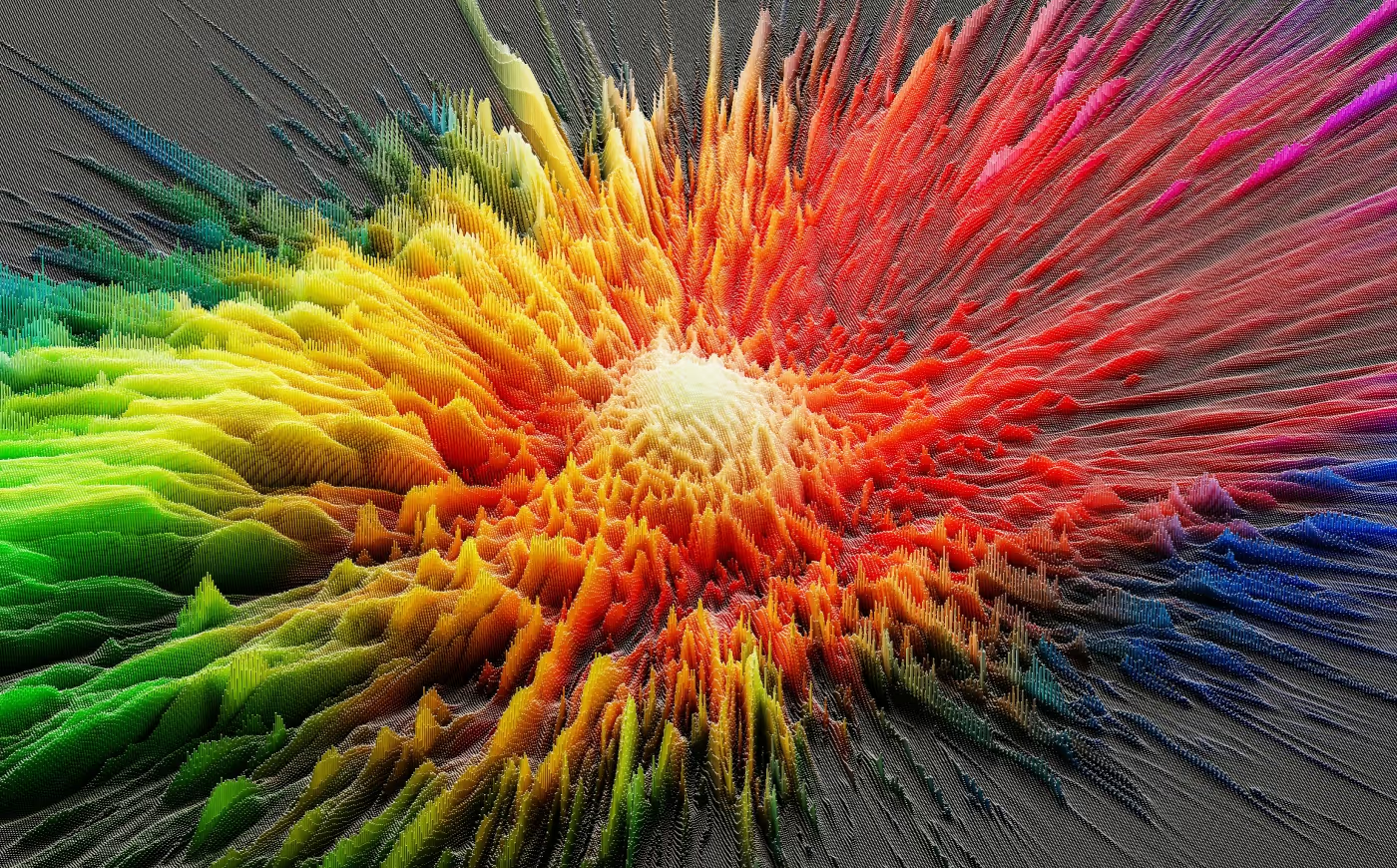Overview
Creativity has traditionally been defined by the dual pillars of novelty and usefulness (Stein, 1953; Runco & Jaeger, 2012). While generative AI systems now routinely satisfy these criteria, the content they produce actually converges toward sameness (Doshi & Hauser, 2024). As humans increasingly partner with AI to generate creative content, the counterintuitive “common novelty” of AI creativity means that the same content that appears creative is missing the core of what makes creativity valuable – distinctness. Thus, while conventional creativity assessments may retain merit in limited contexts, their practical value for differentiation and innovation has rapidly diminished in an AI-pervaded environment. Organizations that persist in relying solely on these measures will find themselves indistinguishable from - and ultimately replaced by—AI-driven operations.
As traditional creativity loses value, the ability to generate content that is distinct from common novelty gains value. This ability is Original Intelligence (OI). Effective measurement of OI requires quantitative mapping of idea space expansion (ISE). Here, we outline the importance of OI measured via ISE, as distinct from traditional creativity, for sustaining and growing organizational value. Far from opposing AI, OI becomes the linchpin of effective human–AI collaboration, driving breakthroughs by steering AI tools toward genuinely novel directions that AI alone cannot traverse.
The Evolution of Creativity and the Rise of Common Novelty
Creativity theory has long emphasized the identification of novelty and usefulness in idea generation (Amabile, 1983). Foundational creativity assessments—the Torrance Tests (Torrance, 1966) and divergent-thinking measures—reward surface-level originality and fluency. These tests, and their modern digital variants, persist across organizations for talent scouting and innovation metrics.
However, the emergence of AI as a creative agent and partner has eroded the value of traditional creativity and the tools that measure it. Large language and multimodal models excel at the very forms of assessments that have traditionally been the hallmarks of creativity assessment. At the same time the fundamentally probabilistic structure of AI means that the seemingly creative content AI is producing is being massively shared as millions of individuals and organizations have access to the same models (Doshi & Hauser, 2024; Moon, Green, & Kushlev, 2024). Organizations are thus increasingly experiencing homogenization: AI outputs that seem new and appealing actually align tightly around shared probabilities and training biases, producing a uniform aesthetic and conceptual signature at scale (Anderson et al., 2024; Wenger & Kenett, 2025). We call this phenomenon common novelty. It dilutes strategic differentiation and innovation: strategies, product features, and research directions blur into a crowded center without distinctive edges. In this environment, traditional creativity becomes table stakes—and nothing more.
Original Intelligence is rooted in foundational creativity research but represents new human value add-in the AI era
OI encapsulates humans’ ability to generate ideas that go beyond the established probability distributions that underlie AI creativity, integrating cross-domain knowledge and meaning-driven insights. Far from a marketing term, OI represents decades of theoretical and empirical study, and new research showing how humans diverge from AI-only patterns.
The notion that distinct ideas provide distinct value is intuitive and has long been recognized in the creative thinking literature (Mednick, 1962; Ward, Smith, & Finke, 1992). However, AI changes an assumption that has been at the heart of traditional creativity – the assumption that new means different. Now, because ideas that sound new might actually be common, the way we understand creativity – and especially original intelligence – has to be updated. Identifying OI becomes less intuitive – indeed, it is no longer the case that a person can “know it when they see it.” Measuring OI in the AI era requires tools that extend beyond what seems novel. OI must now be quantified in an idea space that accounts for a new kind of intelligence that acts both as an individual and as a massive group.
This updating is especially important because it captures the new human advantage. While AI can match or exceed humans on traditional creativity measures, substantial new evidence shows that humans exceed AI when it comes to generating distinct ideas that add distinct value (Anderson et al., 2024; Doshi & Hauser, 2024; Moon, et al., 2024Wenger & Kenett, 2025).
Measuring and Scaling Original Intelligence via Idea Space Expansion
OI can be operationalized by defining and calculating Idea Space Expansion (ISE): A measurable metric, computed as the directional divergence of human ideas relative to AI- or peer-generated baselines. ISE captures how much ideas are trending toward common themes (including common novelty from AI) or whether they diverge and truly expand the idea space into uncharted territory.
ISE yields both quantitative scores and directional insights, enabling precise benchmarking of human contributions against AI norms, human norms, and human-AI collaborative norms.
Implications for Human–AI Collaboration
OI is not about avoiding AI, it’s about maximizing it. OI is the catalyst for next-generation hybrid workflows.
- Idea Kickstarting: AI drafts multiple candidate prompts; human OI identifies the most conceptually distant seed that aligns with strategic goals.
- Directed Divergence: During iterative loops, humans focus on amplifying unique angles, steering AI’s probabilistic engine into less-explored regions of the idea space.
- Quality Assurance: Post-generation, human evaluators apply ISE-informed scoring to select variants that maximize domain impact.
By centering OI in these stages, organizations can leverage AI’s scale while preserving and amplifying human distinctive contributions.
Implications for Talent Assessment and Organizational Strategy
- Hiring and Talent Development: Shift from traditional creativity tests to ISE diagnostics that provide more accurate value-add insights.
- Team Composition: Construct teams balancing high‐ISE individuals with execution-focused collaborators who translate expanded ideas into deliverables.
- Talent development: Deploy iterative measurement of OI – with defined OI targets and quantitative feedback – to guide development of OI in individuals within an organization and guide reward trajectory/bonus structures.
- Breakthrough Indicators: Shift KPIs from volume of ideas or prompt efficiency to metrics capturing ISE and strategic relevance.
Conclusion: OI – not Traditional Creativity – Will Drive Value
The AI era makes Original Intelligence a core competitive asset. As AI continues to master novelty and usefulness, only those who can expand the idea space will retain a competitive edge. Organizations anchored to outdated measures of creativity cannot identify or demonstrate human performers’ unique contributions—they become redundant and face gradual obsolescence in favor of lower-cost, higher-throughput AI solutions. Original Intelligence—grounded in established creativity research and measured by Idea Space Expansion—offers organizations a clear path to demonstrate and amplify uniquely human value. By embedding OI into talent assessment, team design, and hybrid workflows, businesses can safeguard their strategic differentiation—and ensure humans leverage their OI in an AI era to drive innovation and avoid the hazards of AI homogenization and common novelty.
References
Amabile, T. M. (1983). The social psychology of creativity. Springer.
Anderson, B. R., Shah, J. H., & Kreminski, M. (2024). Homogenization effects of large language models on human creative ideation. Proc. of Creativity & Cognition ’24.
Doshi, A. R., & Hauser, O. P. (2024). Generative AI enhances individual creativity but reduces the collective diversity of novel content. Science Advances, 10(28), eadn5290.
Mednick, S. A. (1962). The associative basis of the creative process. Psychol. Rev., 69(3), 220–232.
Moon, K., Green, A., & Kushlev, K. (2024). Homogenizing Effect of LLM on Creative Diversity: Human vs. ChatGPT Writing. OSF Preprint.
Runco, M. A., & Jaeger, G. J. (2012). The standard definition of creativity. Creativity Res. J., 24(1), 92–96.
Ward, T. B., Smith, S. M., & Finke, R. A. (1992). Creative Cognition. MIT Press.
Wenger, E., & Kenett, Y. (2025). We’re Different, We’re the Same: Creative Homogeneity Across LLMs. arXiv:2501.19361.
Stein, M. I. (1953). Creativity and culture. The Journal of Psychology: Interdisciplinary and Applied, 36, 311-322.
Torrance, E. P. (1966). Torrance Tests of Creative Thinking. Personnel Press.


